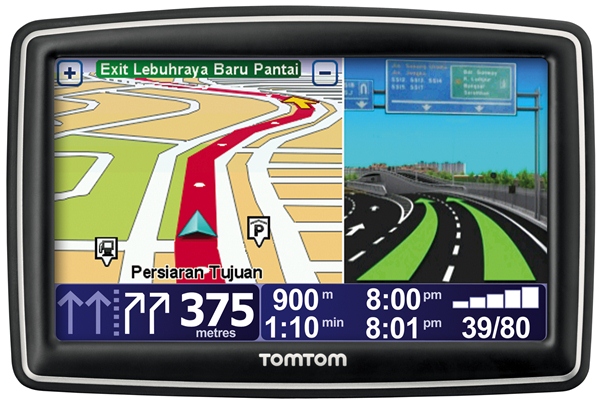Road Safety Tips from TomTom GPS
In conjunction with the upcoming Raya travel period, GPS supplier TomTom has released its own set of road safety tips based on the usage of its GPS units. Although the safety tips centre around promoting the usage of TomTom GPS units, many of the prescribed practices are equally suitable for use even if you use units of alternative GPS brands.
1. Stay on track with a GPS: In the event you miss a turn, do not panic. Your GPS unit is designed to automatically re-calculate an alternative route to take you to your destination. In fact, the ability to re-calculate routes fast should be a key consideration when purchasing a GPS unit.
2. No paper maps needed: Paper maps are quite a handful to read when you are on the move. For some people, it is difficult enough just to orient their positions on the map, let alone find their way to their destination. Using a GPS helps alleviate that frustration, even if it is a passenger doing the map reading. Of course, even you are better off using a GPS while driving, it certainly does not hurt to be proficient at deciphering a good old-fashioned map either.
3. GPS improves night driving safety: A GPS unit gives you better road awareness at night and in low-visibility conditions. You are made aware of upcoming turns, ramps, or bends long before you can see it. This advanced preview of the road ahead allows you to better anticipate road conditions ahead and adjust your speed accordingly. It’s a little like arcade racing games where you have a radar map at the corner of the screen showing you the track layout.
4. Knowing which lane to be in: One of the challenges of driving on unfamiliar and busy multi-lane highways is knowing which lane you’ll need for an upcoming exit. A good-quality text-to-voice GPS will tell and clearly show you the correct lane well in advance. Good GPS units provide information regarding upcoming lane changes and clearly shows you which lane to take at junctions with photo realistic junctions views. Of course, you should also know which lane to take when you are driving slow.
5. Mount the GPS away from important sight lines: Position your GPS low and near the dashboard and out of key driving sight lines. The GPS should not be obscuring your view of the road ahead.
6. Use the speed limits indicator: Most of the better GPS units available in the market have built in speed limit indicators and their map data include speed limits of various roads in the country. As your GPS unit also tracks the speed of your vehicle, it will flash you a warning the moment you exceed the speed limit. For those of you who don’t speed, this is certainly better than having to keep your eyes trained constantly at the speedo. Of course, if the option is available to you, you should use auto cruise.
7. Do not programme the GPS while moving: Enter your destination before you start your journey. If you need to cancel or change a destination, pull over at a rest stop and re-programme.
8. Always use hands-free calling: Many of the better GPS units out there are equipped with Bluetooth handsfree connectivity as an accessory. Make use of it.



























